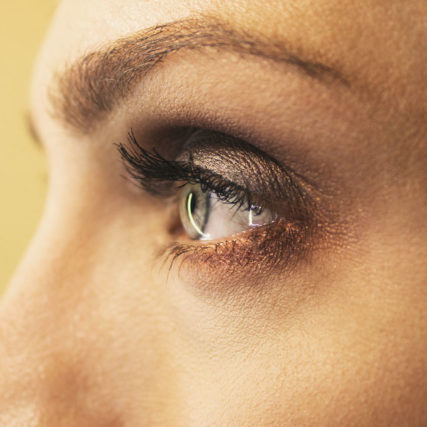
Types of Dry Eye
Tears keep the eyes’ surface lubricated, smooth, and clear. With dry eye, the eyes either don’t have enough water in the tears (known as aqueous-deficient dry eye) or the quality of the tears they produce is substandard due to the reduced quantities of oil, and mucus in the tears (known as evaporative dry eye). Both of these can cause inflammation and harm the eye’s ocular surface.
Far more common is evaporative dry eye, which occurs when the meibomian glands along the rims of the eyelids become blocked. This limits the amount of oil in the tears, so the tears evaporate much faster than they normally would.
With aqueous-deficient dry eye, the lacrimal gland in the upper area of the eye sockets doesn’t produce enough of the water component of tears to keep the eyes hydrated.
Both types of dry eye can occur together.
Dry Eye Symptoms and Causes
Dry eye symptoms include stinging, burning, and redness; watery tears that sometimes run down your cheeks; a scratchy feeling, as if particles are lodged in the eyes; and discomfort while wearing contact lenses.
Dry eye can also be a symptom of many medical conditions, including Sjogrens’ syndrome, lupus, rheumatoid arthritis, scleroderma, graft vs. host disease (after receiving donated bone marrow or peripheral blood stem cells), sarcoidosis, thyroid disorders, and a vitamin A deficiency. Wearing contact lenses, nerve damage following laser eye surgery, and aging can also contribute to dry eye.
Sometimes, the problem is linked to prescription or over-the-counter medication.
Medications that can cause dry eye include:
- Antihistamines
- Decongestants
- Hormone-replacement therapy
- Antidepressants
- Blood-pressure medication
- Acne medication
- Birth-control pills
- Medication for Parkinson's disease


Environmental Causes of Dry Eye
In addition, environmental factors such as air pollutants, air conditioning, the dryness in airplanes, long periods staring at a computer or book, tobacco smoke, even cooking fumes can cause dry eye or aggravate it. If you are suffering from red, itchy, dry, or painful eyes, visit Eye Care Associates for a thorough eye exam. We may test the quality and volume of your tears to better understand your condition and treat it.
Once our practice has determined the true nature and cause of your dry eye, we will create a personalized plan to treat it. This may include a combination of over-the-counter or prescription eye drops or ointments and other in-office treatments. We might prescribe a way to improve your eyelid hygiene and explain how to gently wash your eyelids with warm water. In serious cases we may recommend a range of more in-depth treatments such as light therapy, changing your contact lens prescription, or procedures to block your tear ducts or unblock your oil glands.
